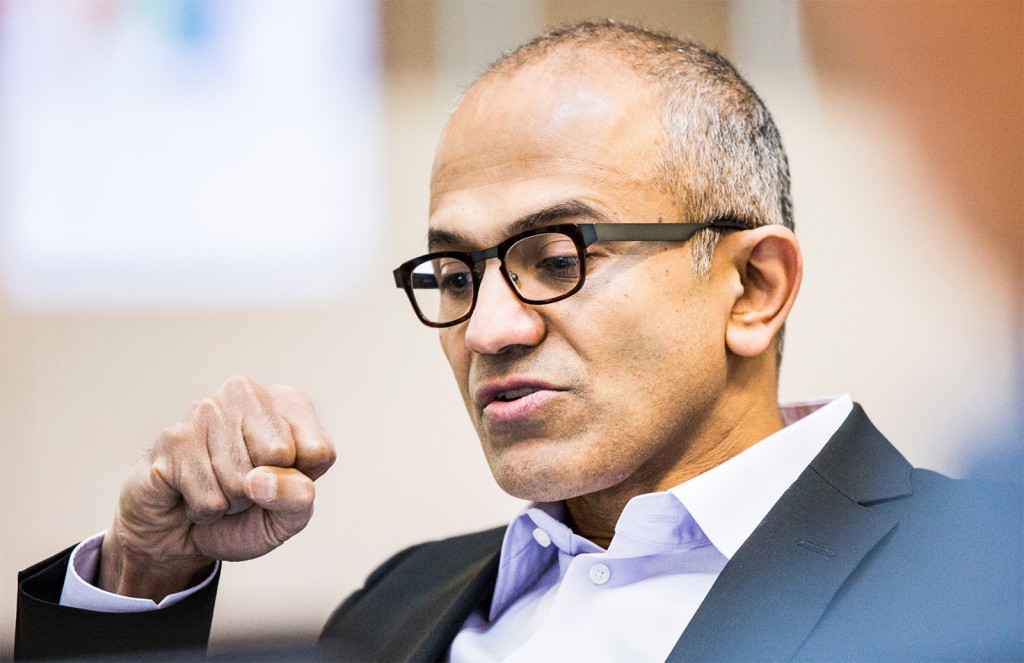Satya Nadella, the new chief executive officer of Microsoft Corp., claims that the software giant could live on for a hundred of years or even more. To do so, it needs constant transformation to stay relevant.
“Longevity in this business is about being able to reinvent yourself or invent the future. In our case, given 39 years of success, it is more about reinvention,” said Satya Nadella in an interview with the New York Times. “For us to be a 100-year old company where people find deep meaning at work, that’s the quest.”
The high-tech industry knows a lot of respected companies who grew to astonishing sizes in less than ten years. There are numerous companies who have been growing for decades. But there are just a handful of companies, who have a history that spans for a century. Satya Nadella believes that Microsoft could be one of such companies.
Typically, companies last less than a human life because of constant changes in the industries, emergence of new technologies and new approaches to businesses. Nonetheless, there are companies like IBM, Nintendo and Nokia, which, by transforming themselves dramatically over and over again, have managed to live for over a hundred of years. The secret of such longevity is simple: always create products the customers are only going to need, form new markets, enjoy your success and start everything once again. This means, constant transformation in a big way. The new chief executive of Microsoft seem to understand how this works.
“We have had great successes, but our future is not about our past success,” said Mr. Nadella. “It is going to be about whether we will invent things that are really going to drive our future.”
“The question is: How do you take all of that valuable experience and apply it to the current context and raise standards,” asked Mr. Nadella.
KitGuru Says: In his book “Only Paranoids Survive”, Andy Grove, a co-founder and a former CEO of Intel Corp., wrote that for a long term growth companies need to focus on their core businesses, but always mark small changes that lead to the strategic inflection points. The latter dramatically change the whole business environment and force to change products, technologies and business approaches. Companies that manage to cross those points and survive should live for a long time. Unfortunately, both Intel and Microsoft failed to recognize on time the strategic inflection point at which personal computing took a turn to connected and mobile computing.
 KitGuru KitGuru.net – Tech News | Hardware News | Hardware Reviews | IOS | Mobile | Gaming | Graphics Cards
KitGuru KitGuru.net – Tech News | Hardware News | Hardware Reviews | IOS | Mobile | Gaming | Graphics Cards




They did miss it, but Microsoft could still have reigned unchallenged on the desk if they were capable of designing a half decent OS. If the sale of whatsapp shows anything, adoption is not about the nuts and bolts, it’s about the look and feel – and a blind chimpanzee with no arms could design a more intuitive, more appealing, UI than Windows.
This is so obvious, it is NOT news!. Understanding how it works and MAKING it work are two very different things. So can he steer the Titanic to a new course of betterment ?. What is he going to do with Nokia and WP8 ?. These are pressing issues people are looking at for the new CEO to steer and set aggressive targets that would impress the press and customers all over the world.
What is he going to do with Windows RT ?. Giving it free is NOT ENOUGH. RT needs to be completely LOSE its shackles and be set free for $5 per copy. It ought to have a Developers copy which is completely free with developer registration.